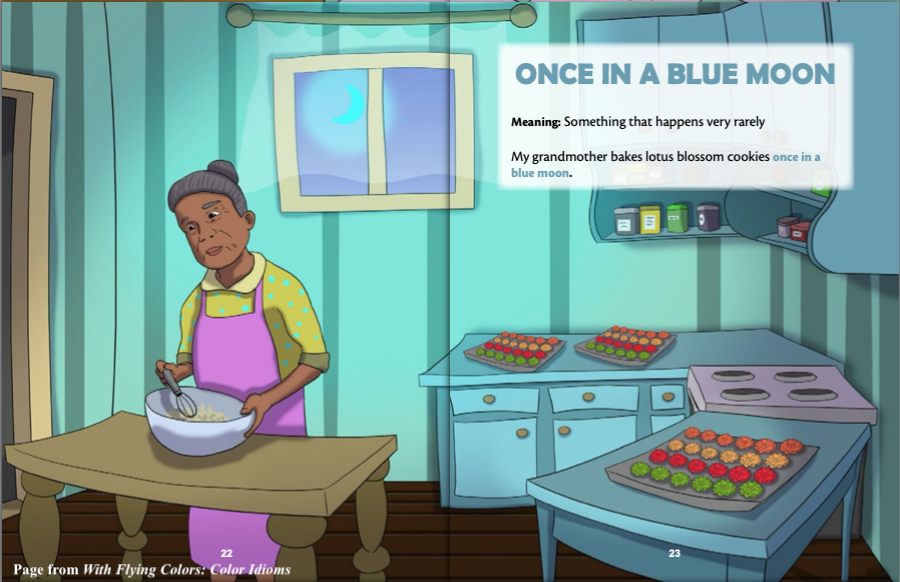
Guest post by Ofer Tirosh
One of the hardest parts of learning a new language is getting used to all the different idioms that other cultures use. These are often expressions that have a firm grounding in the culture from which they originated, so learning and translating them requires a strong cultural understanding of the new language. Below we’ll look more in-depth at idioms, how they transfer across different languages, and how language learners can bridge the cultural divide when studying idioms.
Learning Idioms: The Basics of Translation
Merriam-Webster defines an idiom as “an expression in the usage of a language that is peculiar to itself either in having a meaning that cannot be derived from the conjoined meanings of its elements (such as up in the air for “undecided”) or in its grammatically atypical use of words (such as give way).”
The definition shows why language learners may have a particularly hard time learning idioms in a different language. If the meaning cannot be figured out from the conjoined elements by translating them, or is grammatically atypical, that makes it hard for learners to understand the phrase outside of its original culture.
Common English Language Idioms in the US

What are some popular idioms? Examples of common English idioms and their meanings include:
- Beating a dead horse: rehashing something that is completed
- Bite the bullet: get something unpleasant out of the way
- Cutting corners: taking shortcuts to save time or money
- Devil’s advocate: taking the opposing side of an argument
- Fit as a fiddle: having good health
- Heard it on the grapevine: heard it through word-of-mouth
- On the ball: doing a good job or being quick on the uptake
- Once in a blue moon: something that occurs rarely
How Idioms Might Translate Between Cultures
All of these can be hard for language learners to parse because translating the literal meaning wouldn’t get the point across. Someone not native in English might not know what a grapevine has to do with hearing gossip, for instance.
Understanding idioms can get more complicated when idioms throw cultural backgrounds into the mix. For instance, devil’s advocate could be hard to grasp for language learners who don’t come from an area where the cultural background is predominantly Christian.
To get an idea of how idioms may not transfer between cultures well, below are some examples of how idioms look in other languages.
A TED Blog Post in 2015 listed out some interesting idioms from other languages that don’t translate well on a literal level. Some examples include:
German phrase: Tomaten auf den Augen haben.
Literal translation: “You have tomatoes on your eyes.”
It means when someone is not seeing what other people can see, but it’s in a literal object-based sense. There is nothing abstract about this phrase like there might be in the English language.
Thai phrase: ชาติหน้าตอนบ่าย ๆ
Literal translation: “One afternoon in your next reincarnation.”
This is like the Thai culture’s version of “a cold day in Hell.” As in, it’s never going to happen. This phrase shows how religious and cultural differences can influence idioms.
French phrase: Les carottes sont cuites!
Literal translation: “The carrots are cooked!”
This phrase means that the situation cannot be changed, like “no use crying over spilt milk.” But without knowing that, an English speaker may be left wondering what carrots could have to do with anything.
All of these phrases show how it might feel to attempt to translate English language idioms if you’re from another culture.
How to Help Language Learners Understand Idioms
How do you translate an idiom? The single best way to help language learners grasp idioms is to encourage them to learn the background of the idioms. You’re helping learners to find out more about the culture behind the idiom, rather than just a literal translation of the phrase.
One way to help give context to idioms is to find reading materials for language learners that cover idioms, their meanings and example sentences, like Language Lizard’s series of books about idioms. The books on nature idioms and food idioms contain some particularly interesting examples.
You might also bridge the divide by providing a complementary idiom from the language learner’s native tongue. Notice how much easier it was to grasp the idioms in the section above when a similar phrase of English was provided. For instance, how “the carrots are cooked” translates to “no use crying over spilt milk.”
Idioms are a useful tool for any language learner to have in their vocabulary. They help language learners sound more expressive, rather than following the rote conversational lines out of a textbook. And they can help provide a cultural background as students learn the new language. Idioms can also help with language retention, often being retained faster than novel phrases, thanks in part to their quirky, memorable nature.
Author bio: Ofer Tirosh is a part-time editor at Studyclerk and an entrepreneur and CEO of Tomedes, a language service provider specialising in providing localized business translation and marketing translation.
